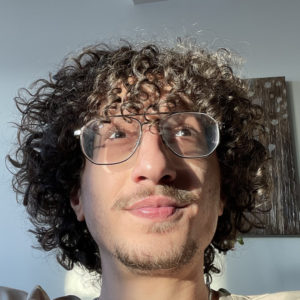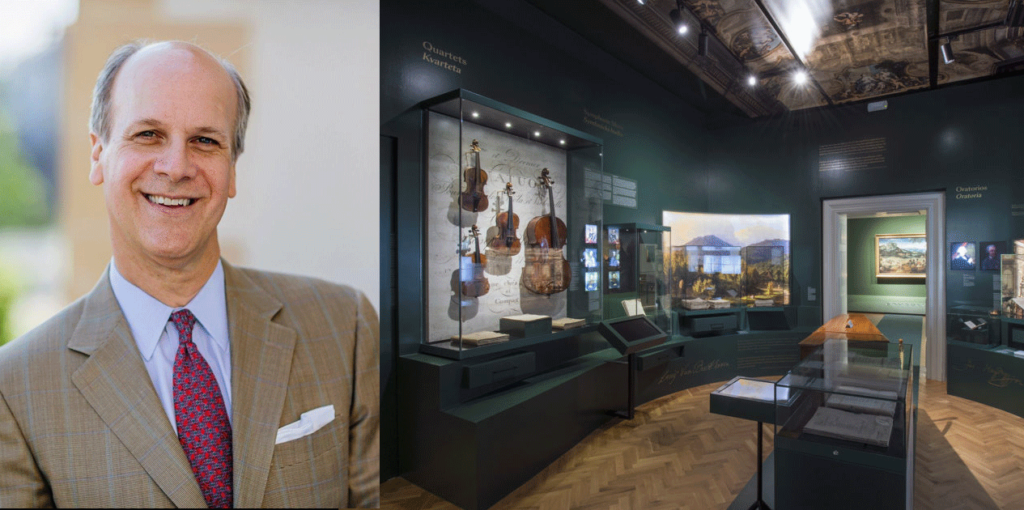William Lobkowicz Sr. comes from centuries of nobility and kindly offered his palace in Prague Castle for a first-of-its-kind NFT conference. The event, Non-Fungible Castle, brought legends from the traditional art sphere together with icons from the NFT space. William Lobkowicz Sr. took advantage of the opportunity to learn about NFTs and offered his unique perspective shaped by a long ancestry of custodianship in the arts in an interview presented below:
Rami: Fantastic event that you’ve set up so far. What are your thoughts on the panel speakers?
William Sr.: I think the best thing I can tell you is I’ve taken ten pages of analog handwritten notes. What’s wonderful about this is that people are together from totally different spheres. And everyone is talking to each other. That’s when ideas start to happen. I think the environment’s very nice, the interest, you feel the energy. And people are being very open about what they talk about.
It’s very interesting. And for me, when we talk about communities today, you have these metaverses, but also, you need that physical contact too. So I have a lot of questions about how we find that balance because we’re all creatures [that] want to be with each other, we want to talk to each other like we’re doing as well.
But I love the meritocracy thing; that someone who works hard can achieve anything, you know. One of the projects we’re working on as an example, and it’s one of the NFT’s here, is Antonín Dvořák, the great Czech 19th century composer. And he wrote Symphony to the New World, which was something we listened to today, and he was the son of a poor butcher in a village in Bohemia. He goes on to become successful, and 180 years later, is still relevant today. It means anybody who has a passion and an interest and is inspired can do great things. These were all the sort of sparks that were coming out of these discussions, you know that the possibilities are infinite. So that was very exciting.
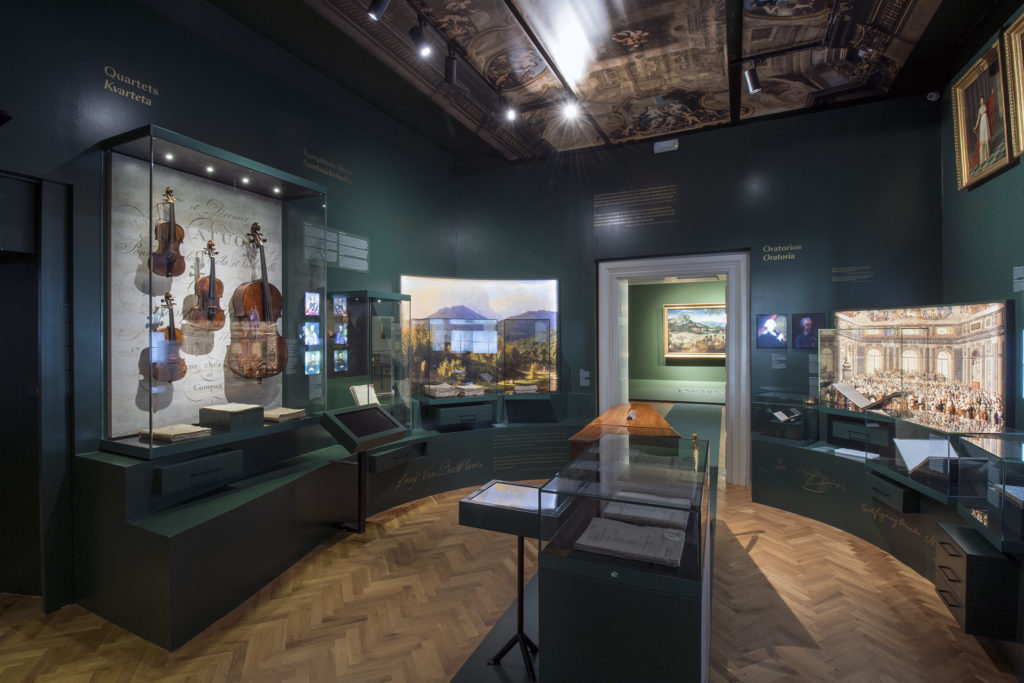
Photo Credit: Lobkowicz Collections
Rami: That’s perfect. You mentioned it is a meritocracy, and people who have that passion, the energy, the enthusiasm and see it through to the end, can potentially succeed. Do you feel like the barriers in the current art environment supported by NFT’s have been reduced versus what they were before? Because you could say the world has always been a meritocracy, but people have just not had the fortune to have their work in front of the right eyes. But do you see the NFT phenomenon as being something that reduces barriers in that way?
William Sr.: I think it is already reducing barriers, and it will continue to reduce barriers. I think today, people are thinking about traditional forms of museums and the ways [that] we operate, and what this is doing is turning it on its head. I gave the example in my opening remarks about Beethoven 250 years ago, who was classically trained, one of the greatest musical minds ever, trained by Hayden.
And then, he produces an 1804 Eroica Symphony, in which he turns the form of the symphony upside down. And he uses instruments, not a harpsichord and voice, but he uses instrumental music as that same passion. Still, the words- it isn’t the passion of words themselves, it’s the music that he’s dealing with, turning the model upside down, using a pianoforte instead of a harpsichord and technology that developed with music. So I see it as sort of a similar thing. I think we’re in a transition because today we’re making culture relevant in the 21st century. My ancestor, the seventh Prince, who was the principal patron of Beethoven- he bankrupted our family.
This made me think that this guy said, “I am so passionate and excited about music, we have to give Beethoven everything I can give him so that he can change our world and change the world of music,” which I love so much. He also must have said, “Beethoven, oh my god, this guy, we’ve got to nurture. This is amazing.” So we made our palaces available for him. We found the finest musicians, they were picked up in carriages, they were fed, they were housed, they would treat- and we have a joke in our family that the musicians were treated better than our own family because he was so passionate, and he gave everything he had to make that happen.
Now, was he a visionary? I think he was. Did he know that Beethoven was going to be what he was going to be to us still today? Who knows. But he felt that he saw it, and he made it. That was his great, I think, contribution to maybe even humanity. But he just said, you know, we’ve got to do it. And I think there are these transitional moments, and I think we’re in one of those times, I do. And that’s what’s exciting about it.
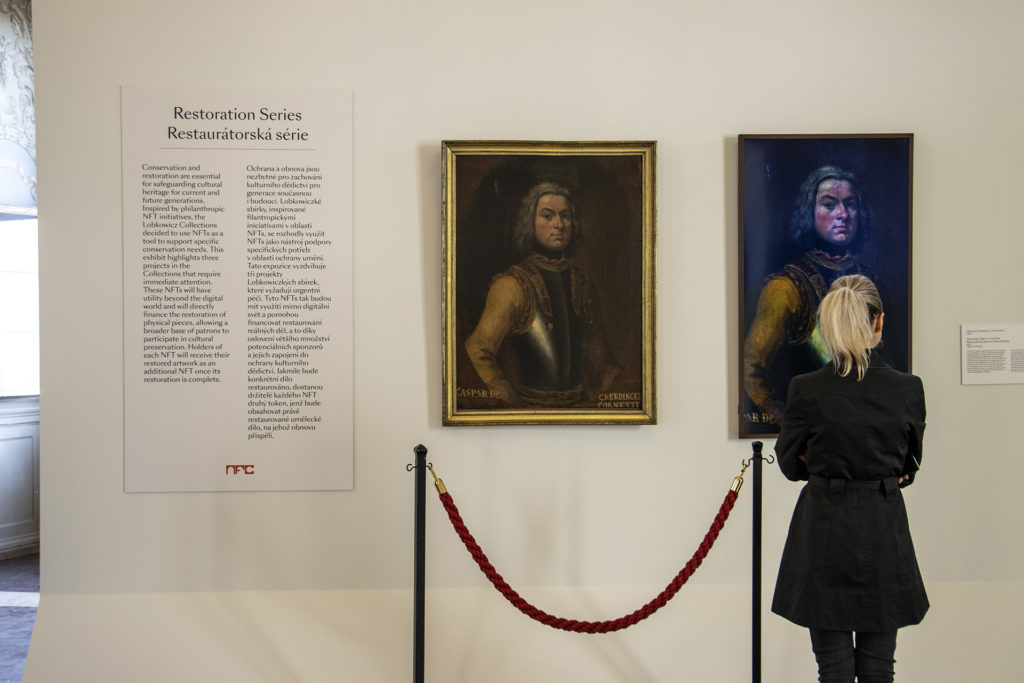
Photo Credit: Lobkowicz Collections
Rami: I agree with that completely. And this is what these discussions here today are really amazing for: bringing the traditional and the crypto together. This is something I was speaking about with William Jr., and it’s something that he’s passionate about. I respect that you’re using this platform that you’ve built not for personal gain, but cultural events.
William Sr.: This is about making this available to the public for the first time in history. None of these castles or collections have ever been open to the world before, we’re the first ones to do that. So you have to think the relationship that we have with them is a bit different, too. So our ancestors had the financial underpinnings of a lot of property that had been built up over the centuries. To fund taking care of a castle, to fund patronizing Beethoven, even though they ran out of money for a while, we had to wait a little bit to get more money then.
Rami: But that was a great investment.
William Sr.: Yeah it was! But that was a different model. And so today, you know, you have state museums who have a different relationship, and there are fewer and fewer private people like us who are doing this. We’re custodians of culture, it’s the best way I can say it. We’re stewards of these things. And we believe for the future, to make these collections last another 700 years, and to make the buildings come to life again, because they were sleeping for 50 years, two world wars, 40 years of communism and all of that.
To do that we have to re-engage you and the audience and the question is well, why? How are we going to bring it to life? We’re going to bring it to life by sharing them, by seeing them, by letting young musicians or young artists be inspired by these things. NFT’s are such a natural progression. An NFT artist comes in, is inspired by this, and creates an NFT that is- it’s just like with Beethoven, it’s just another piece of that art puzzle.
And if we do our jobs, well, these things will be sustained for another 700 years, but it won’t be princes in their castles, living here with lots of servants and working for the Emperor. You know, those days are long gone. But we can still do it with the same core and the same heart and care for these collections because they’re part of humanity. These are cultural assets. They go back to the eighth century. That’s 65,000 books, millions of archival documents, and all of these things can be part of our lives and are part of our history, our European history, our world history.
So that’s what we think will be the new underpinnings of these collections. If we do that well, then I think we’ve done something for our ancestors in line with it. We’ve done something for history, but also for the world to connect with these things that make the world a better place. That’s as quickly as I can say our motivations. I hope that makes some semblance of sense.
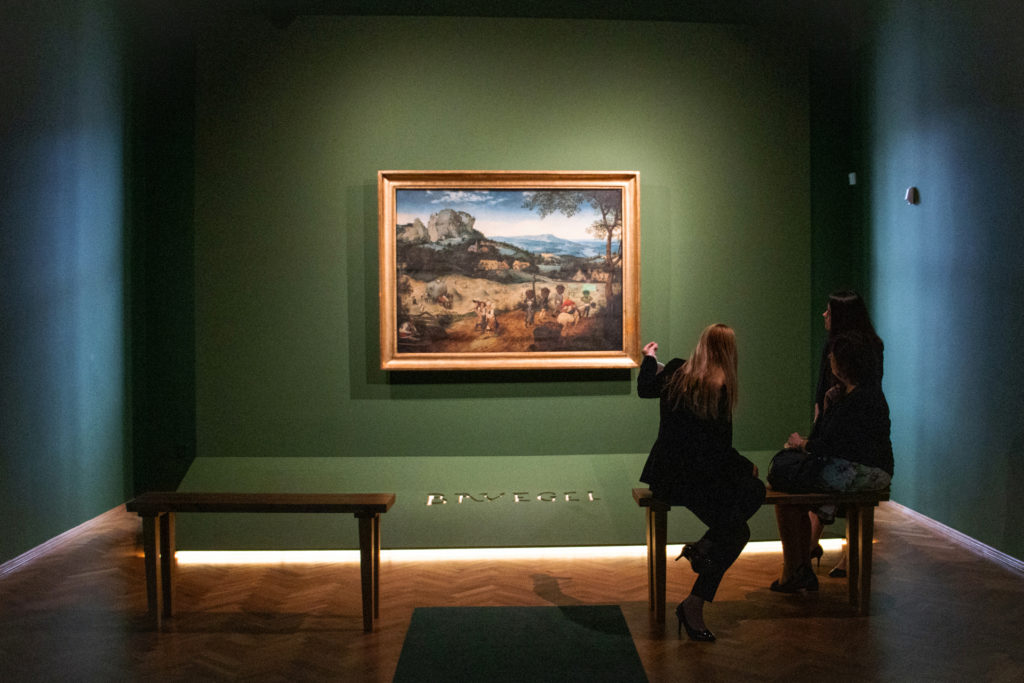
Photo Credit: Lobkowicz Collections
Rami: It does. It does. And so now you’re in this unique position, and you have had these discussions with these amazing people. And you continue to pour into this. Do you think this NFT phenomenon was bound to happen? Do you think this was the natural evolution of things? Or do you think this is one of those side universes that’s kind of crazy?
William Sr.: No, I don’t think it’s crazy at all. But I have to be honest, six months ago, I didn’t know what an NFT was. So I’m probably the wrong person to ask that question. But where I’m sitting from, I see it as another innovation in history. And I see it as a natural progression of art and artistic content and collections, and also we want to help the artists, we want to help the musicians because these are our, our guys, you know, these are the women who we work for as well.
And a lot of people have said, I think it’s right, they’re not paid enough, they’re not supported enough. And the artists are the ones that are there to help us think about possibilities and make our culture and our world. They’re very important, and they’re typically poorly paid. They’re worried about paying their rent and all that really rings true with me. And I think that’s something we can help and feature these people and showcase them and their work. So that’s exciting for me, but I’m no expert.
Rami: That’s an excellent answer. And it kind of brings me to the next question that I wanted to ask. Your family has a very long history of being benefactors of the arts, and were even doing so when the first Renaissance happened. So now, would you define this as a sort of semi-Renaissance?
William Sr.: Yeah, yeah, I think Renaissance is a great word because it’s “rebirth,” right? And we’re all, honestly, not to go too far out there, but we’re being reborn every day. It’s a new day, the sun comes up, it changes, you have a bad day, the next day, you can have a great one. So, rebirth, I think, is a great way to look at it. In our particular situation, it’s about public-oriented, public-facing work, as opposed to just this is our “family stuff.”
One of the things with NFT’s that I see also is someone in Sub-Saharan Africa, for example, being able to connect to this stuff, maybe they become the next Rorshach and are inspired to be a great artist. But also, maybe they see an NFT on their computer and it has something to do with water, which is one of my big things: running out of water. And maybe in Sub-Saharan Africa, they have come up with a creative solution of how to help us with our water supply problem for future generations. Or maybe it’s someone in Brazil in the rainforest that’s seeing these things going on, and has a great idea. How do we connect with those people?
It’s these communities that NFTs are talking about. These communities where people can do it by their service, by their desire to learn something or to share something, and they become a member of a community because they’re a valued member of the community, it’s a meritocracy. They come in because they have a passion.
But there’s a lot there. I didn’t answer your question at all. But these are some of the things that inspire me.
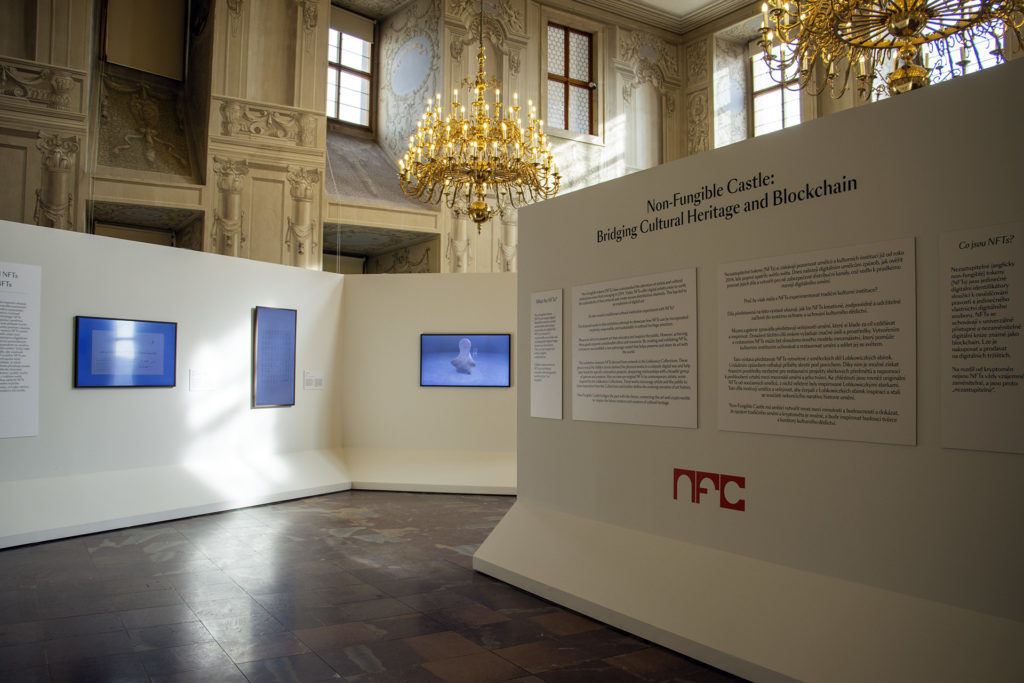
Photo Credit: Lobkowicz Collections
Rami: No, no, I think that that provides a lot of really great insight nonetheless. And you spoke about a point that you’re very open, and looking to share this culture, and calling yourself the “custodians of this culture.” With that said, what do you think separates your family and your attitude from all of the other private collections that people may never get to see? What is it that changes that? And how can we change the minds of those people?
William Sr.: Yeah, I mean, that gets into the trickier territory, because every family has their situation, I would never dare or presume to say another family that only had their private collections was doing something better or worse for the world, that is people’s right. We have freedom of speech, freedom of ownership, private property, right? So I don’t judge anybody. There are other private collections, where people are doing public works and opening them to some degree. Other families have them just because they’re beautiful, but I can’t speak to that.
Our circumstances are very, very different. And we had an opportunity to come back here because of a revolution thanks to Václav Havel. We were very lucky. We were taken into a community here that welcomed us after we’d been thrown out of by the Nazis and the communists. Some laws were passed to restitute property. So it’s sort of a series of historical events that happened.
There was no guarantee it was going to come back in the 1990s. I mean, we didn’t know. We were borrowing millions of dollars for things we had no idea if we could pay lawyers to do. So, we were maybe very stupid, or naive, but we thought, okay, one day, it’ll be okay. We have a long-term view. My son is the 20th generation of our family. We don’t think of things in terms of 30 or 40, or my lifetime, we think of it in terms of we are one cog in a long wheel of history.
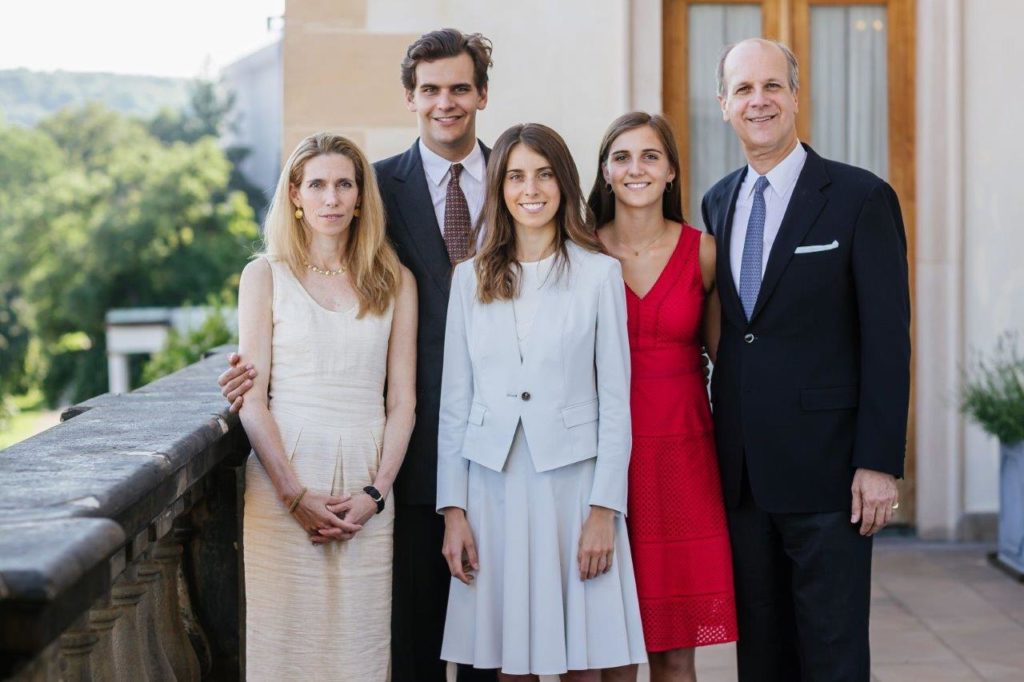
Photo Credit: Lobkowicz Collections
Rami: That’s beautiful. I respect your humbleness, that’s something that I admire a lot. I’ve been to a bunch of places and seen people who are considered wealthy there, or royalty there, and they’re not like that. They’re not as humble. They’re not as open to it. They’re not as welcoming to everyone else. And I got a different feeling here. And I respect what you’re doing.
William Sr.: And you know, we want to make money because we can do more things. We see money and success as purpose-driven. It’s always what it is. I want money not to buy a yacht, I want money so I can repair something, make something available. Do something with it. We’ve got a ton of stuff that needs to be repaired. So, I see that and I have to be sharp, I have to make the business side of it too. I can’t be naive and say, “Oh, the law happened” because that’s not the way life works either. So you have to keep your feet very much on the ground, our back is very much against the wall very often. We had to figure out ways to do things that had never been done before. So it’s maybe why I feel quite comfortable in this NFT space.
FEATURED IMAGE: Photo Credit: Lobkowicz Collections

